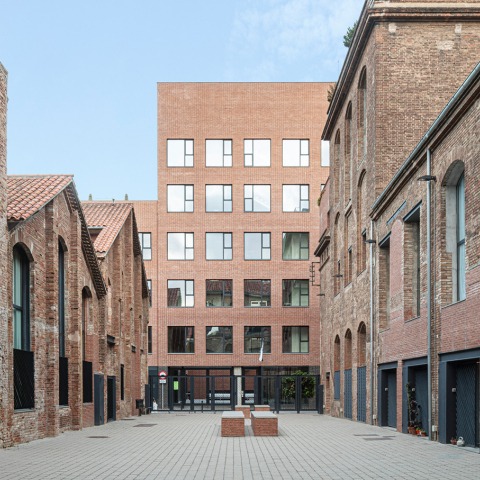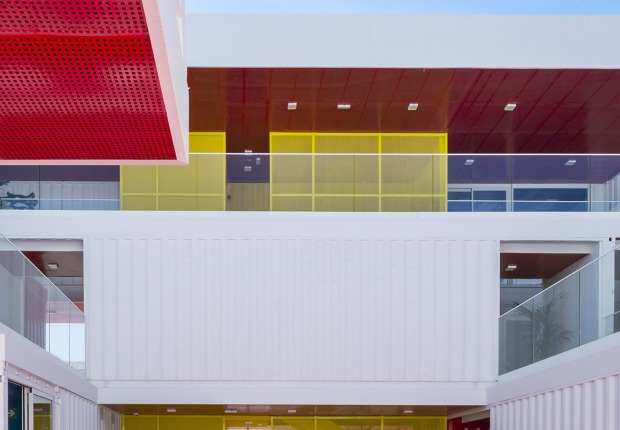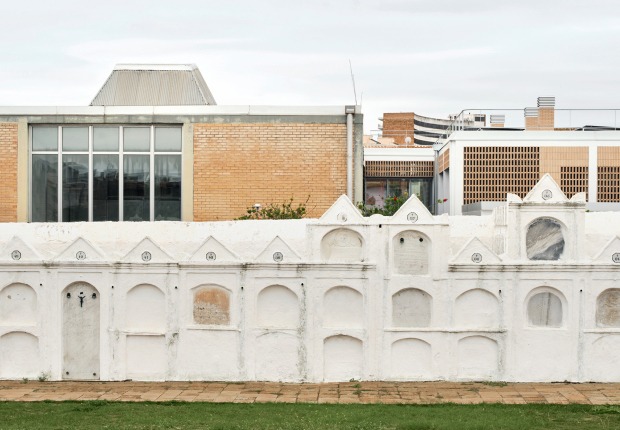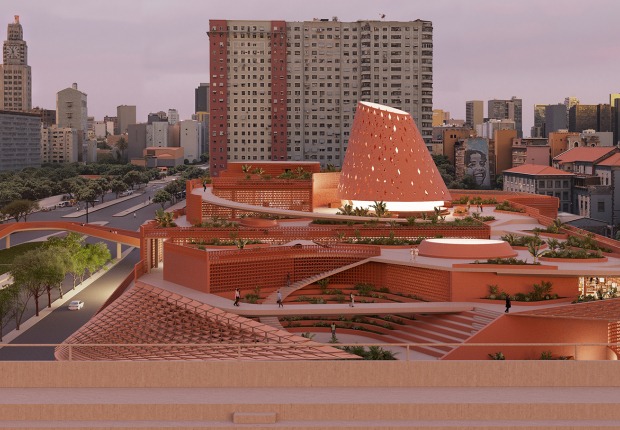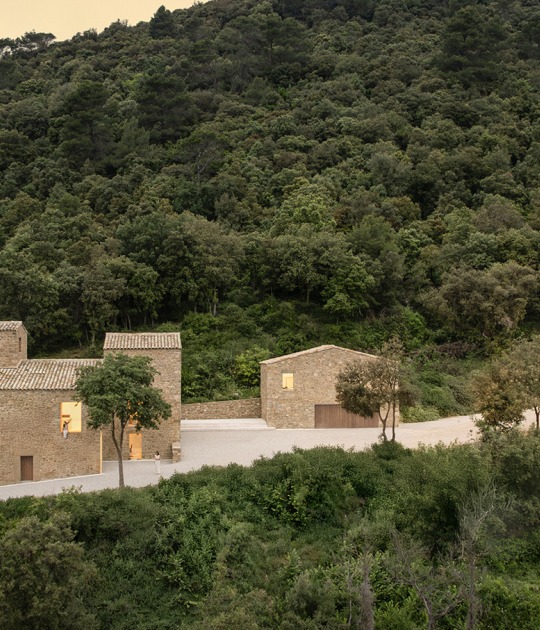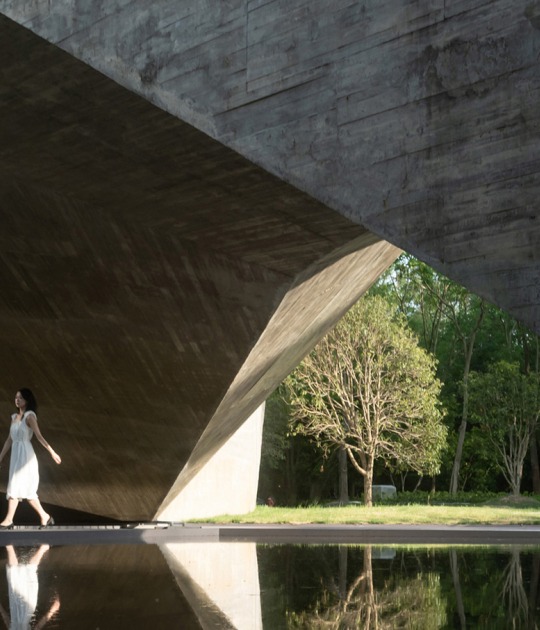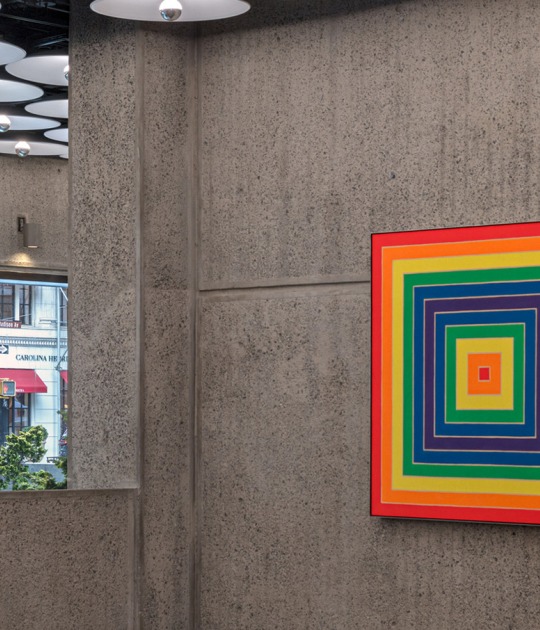The set stands out for the use of lines and right angles, present in its structure and in all the compositional elements. The roofs are gabled except for the highest volume which has flat roofs that can be used as a terrace. The use of common spaces as open spaces that makes the complex a small city.
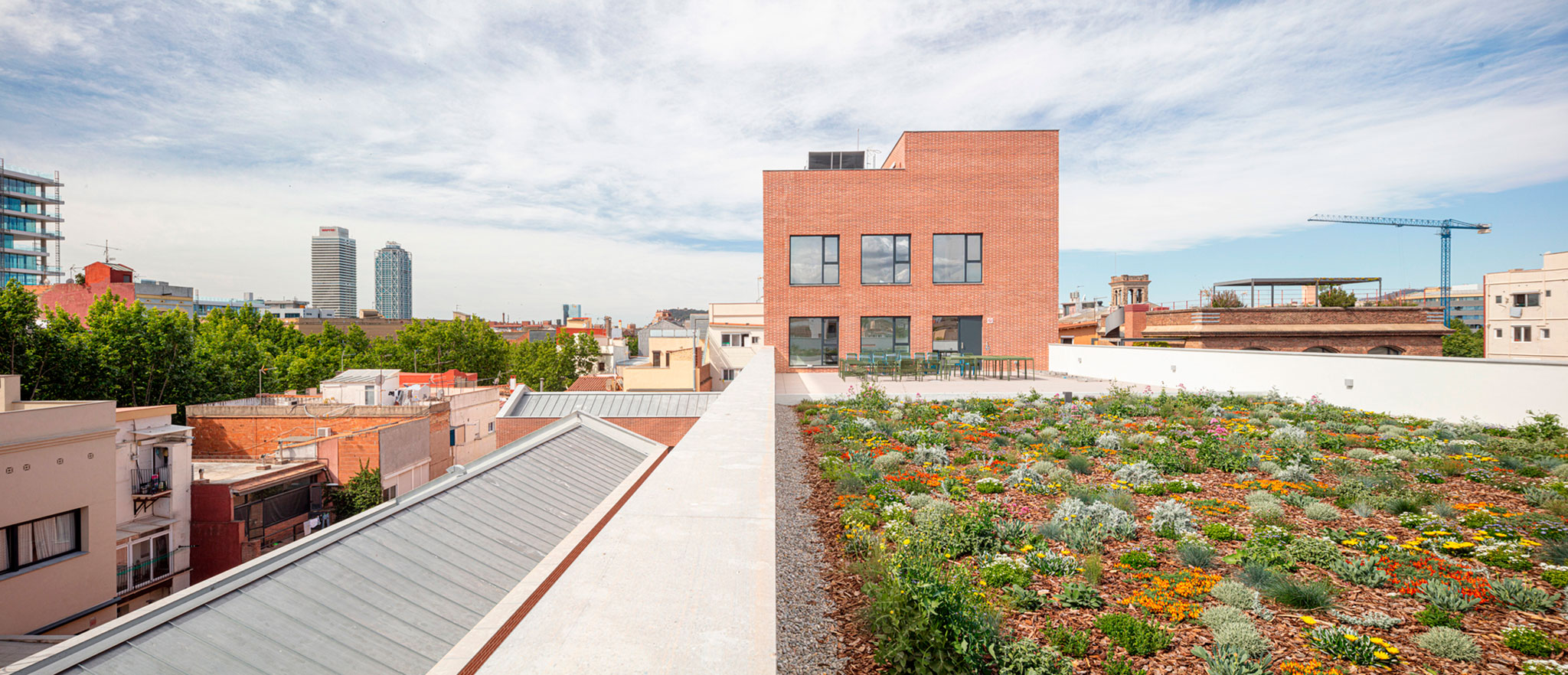
Mas de Roda Offices by Garcés-de Seta-Bonet Arquitectes. Photograph by Adrià Goula.
Description of project by Garcés-de Seta-Bonet Arquitectes
The action refers to the area of an old factory built in 1916, which was part of the well-known "Companyia d'Indústries Agrícoles S.A." by Josep Suñol and Jaume Carner, a place popularly known as “Pasaje del Azúcar”, -or Sugar Passage-. In accordance with the plan drawn up in 2003, which included the whole of the old factory on both sides of the road, in 2008 the former industrial buildings on the north side, with a constructed area of 4,500 m2, were converted into 29 unconventional dwellings or lofts.
Once the spaces of the former factory were rehabilitated to plan the necessary houses and basements, another 4,500 m2 planned above ground level remained unbuilt on the south side of the Passage. These were the subject of the new-built office project (2019), carried out for a new developer, for which the original plan was reviewed and optimized, and the original allocated area was extended.
The office project continues the drawing of the former volumes on the other side of the Mas de Roda so that the whole complex defines a coherent urban ecosystem with its streets and buildings that can be accessed from Calle Ramon Turró on the north side and from two points, located in front of the other, on the Pasaje Mas de Roda.
Instead of thinking of a classic building of offices grouped in a single volume, this project is based on a model similar to that of a city, as a kind of more porous avenue, for which a variety of volumes of different heights and levels have been built. The highest volume has flat roofs used as terraces, while the lower constructions are characterized by a gabled roof. This distribution allows for open and closed spaces, public or semi-public and private, to coexist flexibly like a small city within the city.
With a more abstract architectural language, and without resorting to literal mimicry, the new offices create continuity with the old rehabilitated buildings in terms of mass, materiality, shape, and the repeated arrangement of the windows across the new façades.
On the ground floor of the new buildings, the use of anthracite-coloured exposed brick adds greater precision to the contact between the building and the street and more effectively groups together the numerous incidents that occur on this level. This relationship with the outside is also contemplated in the floors, with a material that extends inside the volumes, suggesting continuity.
This distribution and materiality allow the old part of the factory to be rehabilitated for housing and the newly built office part to harmoniously conserve the industrial identity of the Poblenou district.
The Surroundings
The project is located in 22@ Barcelona, an area of two hundred hectares of industrial land in the historic industrial district of Poblenou in Barcelona industrial land in the historic industrial district of Poblenou, in Barcelona, which is planned to be an innovative district offering modern spaces for the strategic concentration of knowledge-intensive activities the strategic concentration of knowledge-intensive activities. This initiative is also an urban regeneration project and a new model of the city that responds to the challenges posed by the knowledge society. It is the most important urban transformation project in the city of Barcelona in recent years and one of the most ambitious in the world and one of the most ambitious projects of its kind in Europe, with a high real estate potential and a public investment of the real estate potential, and a public investment of 180 million euros in the infrastructure plan.
Project principles
It seems that never before has it been so necessary to reflect on the relationship we establish with the places we inhabit. Climate crisis, phenomena of great social transformation, real estate bubbles, major speculative disasters that have altered the landscape and the gold-hydrographic are just some of the indicators that architecture is increasingly becoming an obligatory field of experimentation for new, more sustainable policies.
These considerations are the basis of three fundamental principles that characterize the approach of this project and the Garcés de Seta Bonet studio. The first of these is attention to place. As Jordi Garcés points out, "the transformation of the place and its environment produced by the environment produced by the architectural intervention becomes a precious opportunity to re-read, adapt and to re-read, adapt and enhance the richness of the context".
The second is the dialogue between the existing and the new. In the case of these offices, Daria de Seta points out that "the project proposes solutions that speak the language of those who inhabit the space today. those who inhabit the space today. It has operated in a historic place, but it has been done in a contemporary key in a contemporary key".
And the third is to ask oneself what is necessary. In the words of Anna Bonet, the studio considers that "achieving the greatest expressive and conceptual impact is fundamental to fundamental to understand what is strictly necessary, not only in terms of reducing impacts and costs, but also in terms of the reduction of impacts and costs, but above all in terms of rigour and precision".
